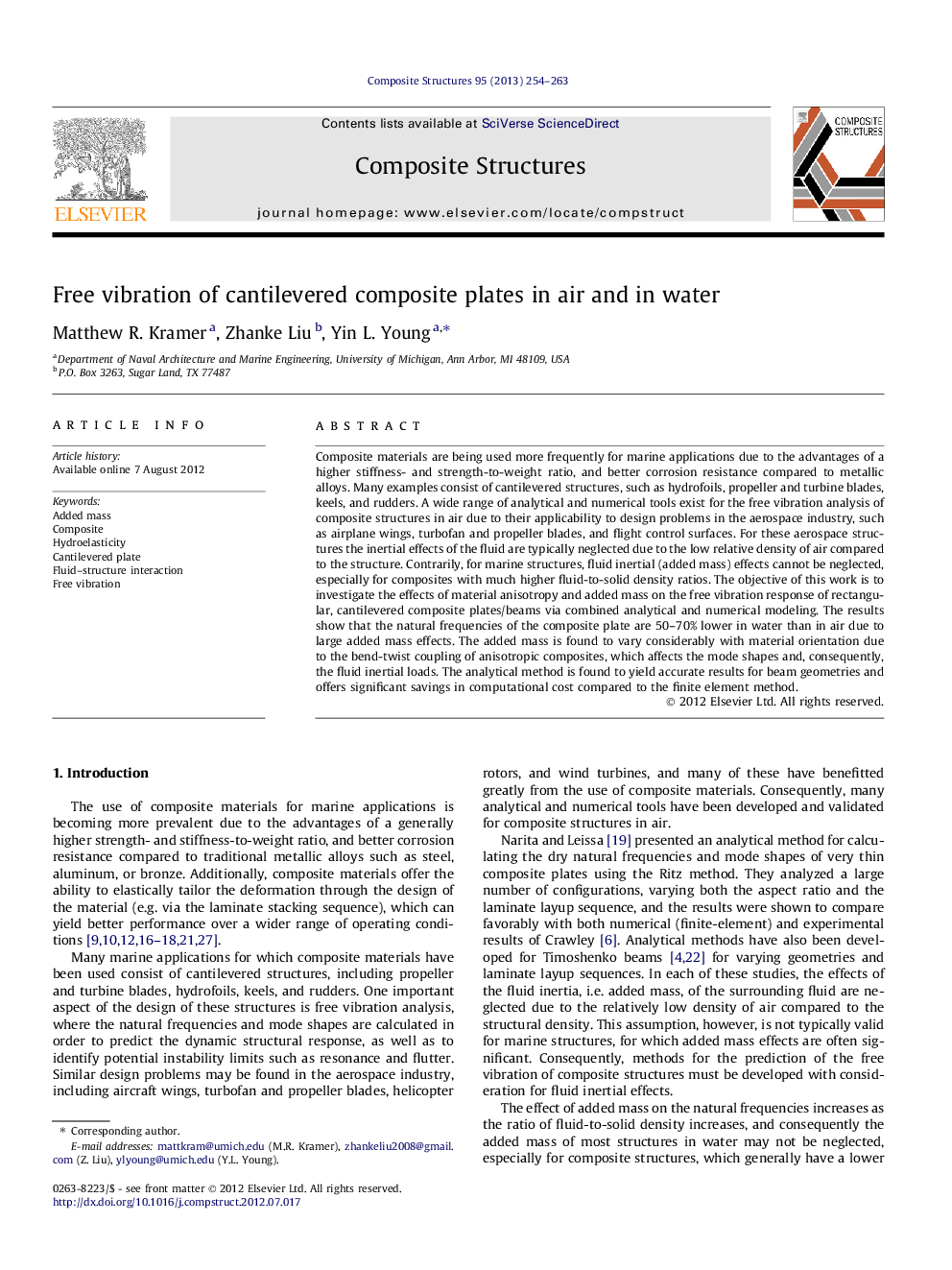| Article ID | Journal | Published Year | Pages | File Type |
|---|---|---|---|---|
| 252156 | Composite Structures | 2013 | 10 Pages |
Composite materials are being used more frequently for marine applications due to the advantages of a higher stiffness- and strength-to-weight ratio, and better corrosion resistance compared to metallic alloys. Many examples consist of cantilevered structures, such as hydrofoils, propeller and turbine blades, keels, and rudders. A wide range of analytical and numerical tools exist for the free vibration analysis of composite structures in air due to their applicability to design problems in the aerospace industry, such as airplane wings, turbofan and propeller blades, and flight control surfaces. For these aerospace structures the inertial effects of the fluid are typically neglected due to the low relative density of air compared to the structure. Contrarily, for marine structures, fluid inertial (added mass) effects cannot be neglected, especially for composites with much higher fluid-to-solid density ratios. The objective of this work is to investigate the effects of material anisotropy and added mass on the free vibration response of rectangular, cantilevered composite plates/beams via combined analytical and numerical modeling. The results show that the natural frequencies of the composite plate are 50–70% lower in water than in air due to large added mass effects. The added mass is found to vary considerably with material orientation due to the bend-twist coupling of anisotropic composites, which affects the mode shapes and, consequently, the fluid inertial loads. The analytical method is found to yield accurate results for beam geometries and offers significant savings in computational cost compared to the finite element method.
